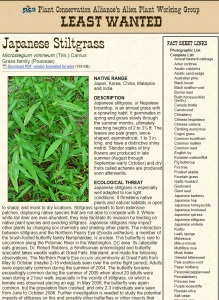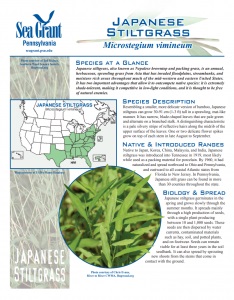Japanese stiltgrass (Microstegium vimineum)
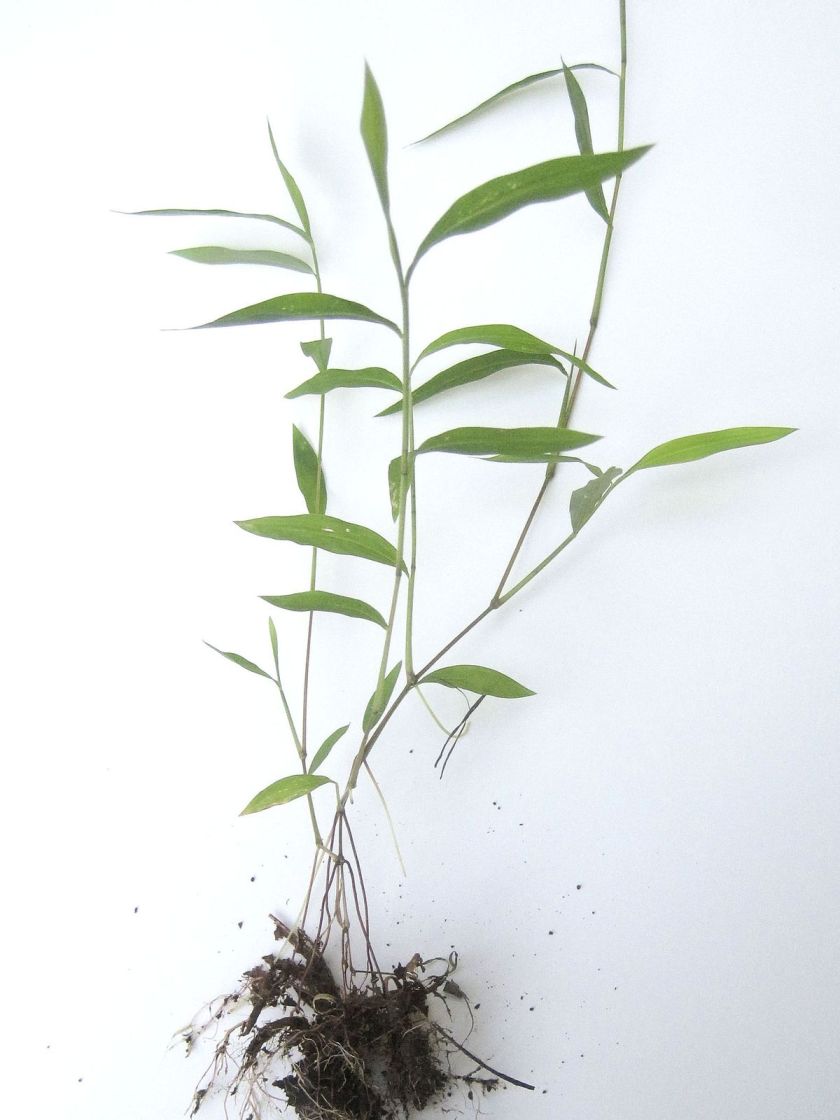
Photo: Fran Kittek - The Morning Call
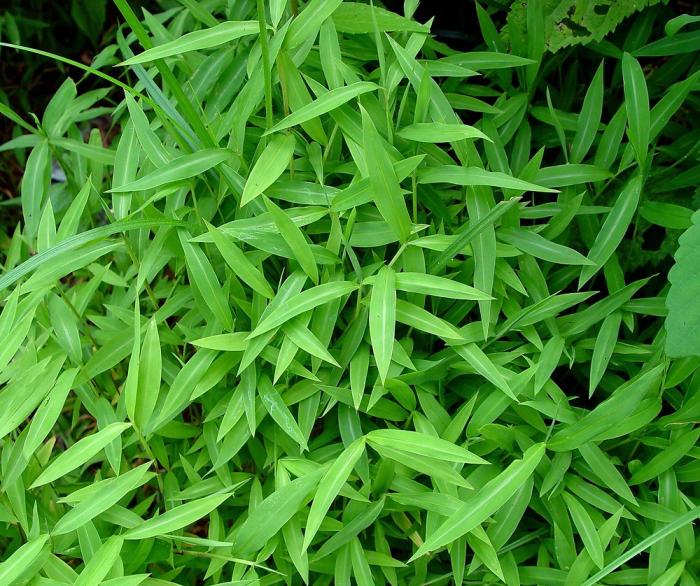
Photo: gobotany.newenglandwild.org
French common name: Herbe à échasses japonaise or Microstégie en osier
Order: Poales
Family: Poaceae
Did You Know? It is thought that Japanese stiltgrass arrived in North America as packing material to protect porcelain in the early 1900s.
Introduction
Japanese stiltgrass is native to Asia. It has been in North America since its first detection in Tennessee in the early 1900s. Canada has recently confirmed the first population in the Niagara Region of southern Ontario.
Japanese stiltgrass can grow to a meter tall and establishes in a wide variety of habitats, including gardens, but prefers low light conditions.
The plant can produce thousands of seeds that travel long distances as well as through a system of underground stems called stolons.
Large populations of Japanese stiltgrass pose widespread issues including overcrowding, lowered biodiversity, and altered soil chemistry. It’s important that we restrict Japanese stiltgrass from establishing any further populations in Ontario, and Canada as a whole.
You can help by knowing how to identify Japanese stiltgrass and refraining from planting non-native flowers and/or seeds in your gardens. If you think you’ve found Japanese stiltgrass, report it using the Invading species hotline (1-800-563-7711) or on EDDMaps.
General Information
Japanese stiltgrass can occupy almost any habitat including forests, wetlands, lawns, and gardens. The grass can establish in disturbed or undisturbed areas, in wet or dry soil, but prefers low light conditions. (Elliott, 2019).
Japanese stiltgrass is an annual grass that can grow up to 1 meter tall. The plants develop a slightly purplish color in the fall when flowering begins (Government of Canada, 2019).
The leaves are pale green and measure approximately 1 to 3 inches long. The leaves are short and broad in comparison to other grasses (Reid & O’Brien, 2019). Each Japanese stiltgrass plant can produce between 100 and 1,000 seeds. These seeds are distributed over large areas through the movement of soil, water movement and by animal and human movement. It can also reproduce through stolons which produce new stems (Reid & O’Brien, 2019)
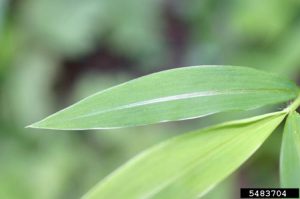
Japanese stiltgrass is native to Asia. The first North American detection was in Tennessee in the early 1900s. There are currently two confirmed populations of this species in Canada, both of which are located in southern Ontario in Short Hills Provincial Park (Burt et al. 2020), and Waterloo Park.
Japanese stiltgrass was first detected in 2019 in Short Hills Provincial Park in the Niagara region of Ontario (Asbil, 2020). In the United States, this species can be found in New York, Ohio, Pennsylvania and along the U.S. Atlantic coast (Government of Canada, 2019).
Japanese stiltgrass impacts the ecosystem in a variety of ways. It causes a decrease in biodiversity because it crowds out native species (Adams & Engelhardt, 2009), decreased habitat for native species (Reid & O’Brien, 2019), reduced native tree seedling regeneration and size which in turn slows forest succession (Government of Maine, 2021), and it can impact soil chemistry by altering the nutrient cycling process (Sea Grant Pennsylvania, 2018).
If you see Japanese stiltgrass, you can call the Invading species hotline at 1-800-563-7711, or report any sightings to EDDMaps.
Avoid using invasive plants in gardens – refer to Grow Me Instead guide for native plants for your garden.
Stay on trails to reduce the spread of seeds, and keep your pets on leash to minimize exposure to seeds.
Check the Stiltgrass Working Group (Scio Township Michigan) or Wild Ones for more information.

